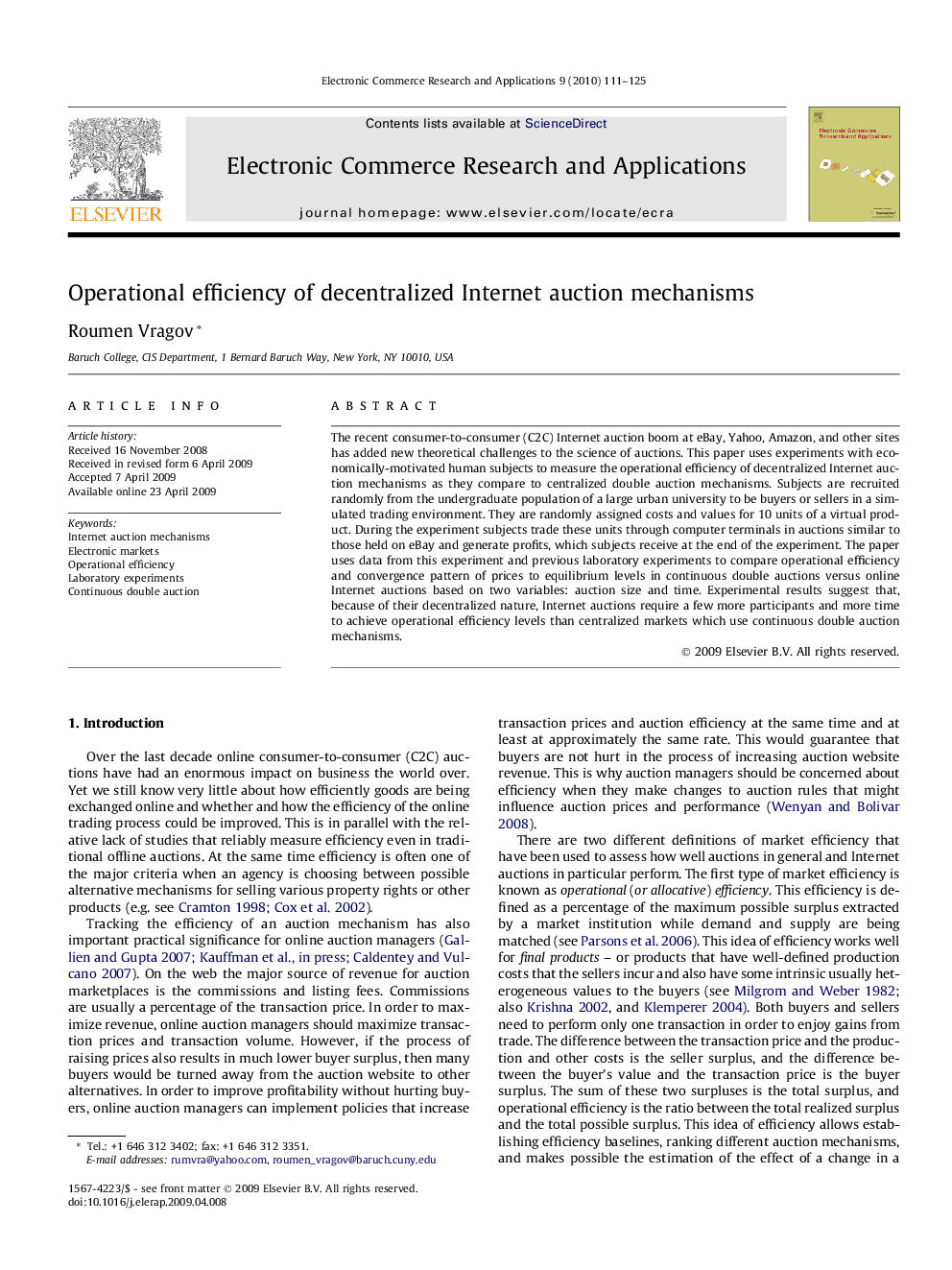| Article ID | Journal | Published Year | Pages | File Type |
|---|---|---|---|---|
| 379920 | Electronic Commerce Research and Applications | 2010 | 15 Pages |
The recent consumer-to-consumer (C2C) Internet auction boom at eBay, Yahoo, Amazon, and other sites has added new theoretical challenges to the science of auctions. This paper uses experiments with economically-motivated human subjects to measure the operational efficiency of decentralized Internet auction mechanisms as they compare to centralized double auction mechanisms. Subjects are recruited randomly from the undergraduate population of a large urban university to be buyers or sellers in a simulated trading environment. They are randomly assigned costs and values for 10 units of a virtual product. During the experiment subjects trade these units through computer terminals in auctions similar to those held on eBay and generate profits, which subjects receive at the end of the experiment. The paper uses data from this experiment and previous laboratory experiments to compare operational efficiency and convergence pattern of prices to equilibrium levels in continuous double auctions versus online Internet auctions based on two variables: auction size and time. Experimental results suggest that, because of their decentralized nature, Internet auctions require a few more participants and more time to achieve operational efficiency levels than centralized markets which use continuous double auction mechanisms.
